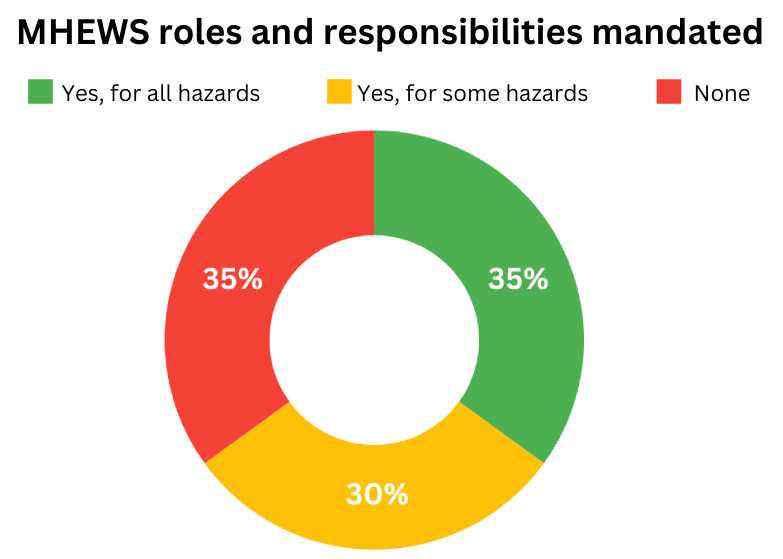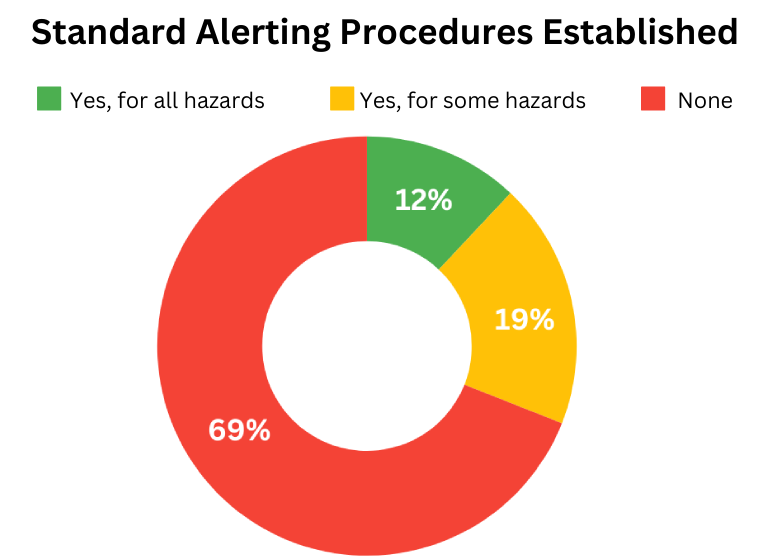MHEWS in LDCs
|
📈 ANALYTICAL REPORT HAZARD MONITORING & FORECASTING IN LDCs
|
 |
Based on the 2024 report on the Status of Multi-Hazard Early Warning Systems (MHEWS) in the Least Developed Countries (LDCs), this analysis delves into the implementation capabilities and challenges of National Hydrological and Meteorological Services (NMHSs) in 26 LDCs1. It examines governance frameworks, institutional mechanisms, resource availability, technical capacities, and infrastructure support.
The findings reveal significant gaps and obstacles, offering a detailed overview of the current state of early warning systems in LDCs. They emphasize the need for coordinated support to improve the systems' effectiveness in reducing the impacts of hydrometeorological hazards.

1. Governance and Legislative Framework |
|
| 📊 Various types of legislative frameworks give NMHSs general mandates to monitor, forecast and produce warnings for the hydrometeorological hazards affecting their countries. However, many fall short of establishing clear roles and responsibilities for the institutions involved in these processes: |
Figure 1 - Extent to which MHEWS roles and responsibilities are defined in the 26 LDCs |
|
|
2. Institutional Mechanisms and Operational Cooperation for MHEWS |
|
| 📊 Effective monitoring of hydrometeorological hazards requires integrating meteorological, hydrological, coastal, and marine observations across multiple agencies, making operational data exchange essential: |
Figure 2 - Extent to which alerting procedures are established in the 26 LDCs |
|
|
3. NMHSs Operational Capacity: Hazard Monitoring and Forecasting |
|
| 📊 Most NMHSs in LDCs struggle with staffing shortages, competency gaps, and non-competitive remuneration, leading to brain drain, especially among ICT professionals, and difficulty hiring qualified local staff due to inadequate higher education programs: | 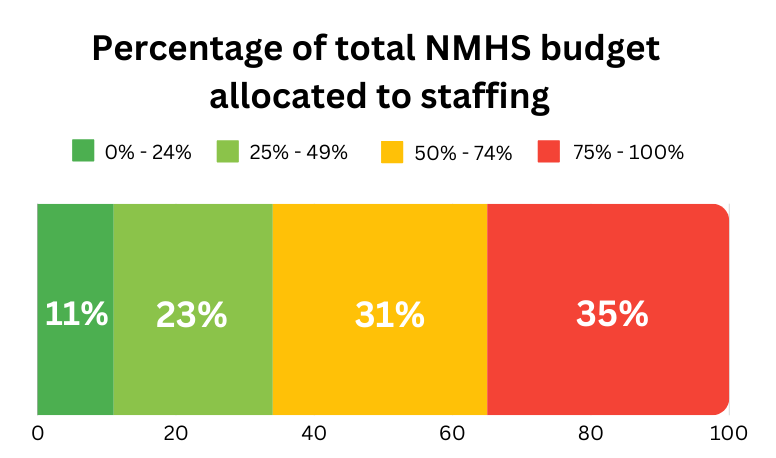
Figure 3 - Percentage of NMHS budget allocated to staffing in the 26 LCDs |
|
|
| 📊 Financial and human resource challenges severely impact NMHSs' ability to monitor and forecast effectively, exacerbated by observation gaps and high rates of inoperable stations, which hinder hazard monitoring and data quality due to maintenance capacity limitations: | 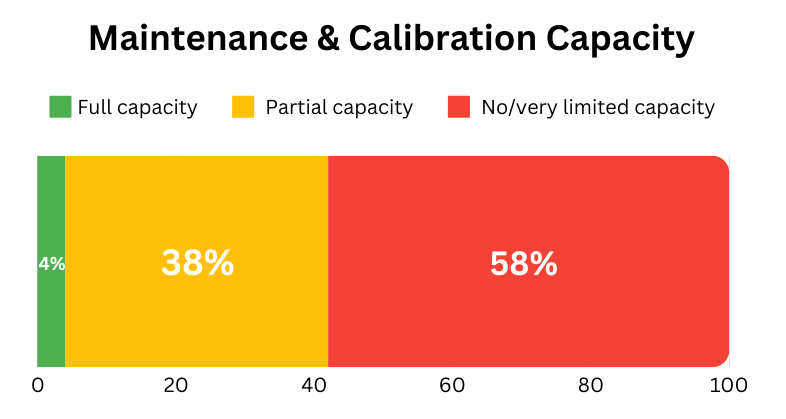
Figure 4 - NMHSs' capacity to perform regular maintenance and calibration of their observation infrastructure networks in 26 LDCs |
|
| 📊 Effective monitoring systems for floods, droughts, and other hazards rely on diverse data sources beyond meteorological observations, including hydrological, marine, and historical data, as well as ancillary information like digital elevation models. However, these critical capabilities are often deficient in LDCs, as highlighted by WMO assessments (CHD, EW4All Pillar 2 Rapid Assessment): | 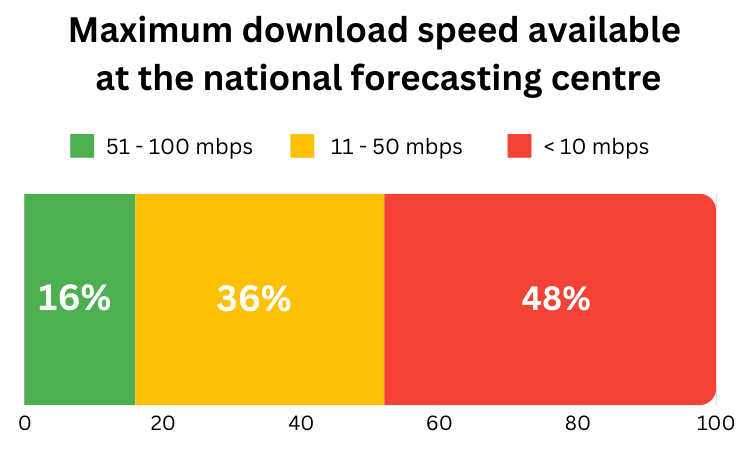
Figure 5 - Maximum download speed available at the national forecasting centre in 26 LDCs |
|
| 📊 The Early Warning for All Initiative emphasizes using impact-based forecasting (IBF) for effective early action. However, IBF remains challenging for developing NMHSs: | 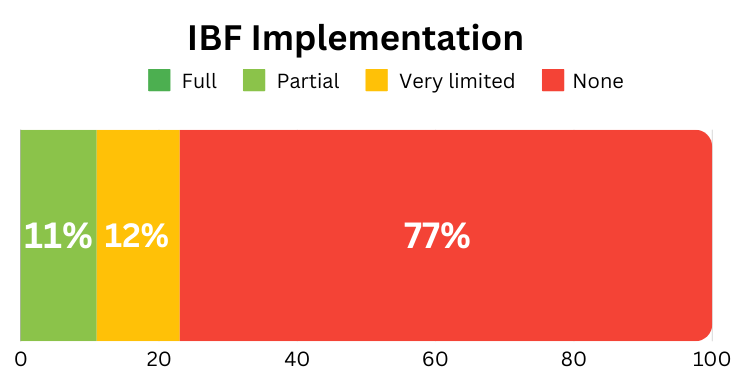
Figure 6 - Implementation of impact-based forecasting principles and techniques for the provision of impact-based warning services by NMHSs in 26 LDCs |
|
|
Developing NMHSs in developing countries face challenges in IBF due to capacity gaps and resource constraints. Sustainable IBF capacity building requires strengthening NMHSs' institutional and operational capabilities across the hydromet value chain. |
Conclusion
The analysis underscores the critical need for comprehensive and targeted interventions to fortify the hazard monitoring systems of NMHSs across all Earth domains in LDCs. Sustained and coordinated support is imperative to enable these institutions to not only enhance their monitoring capabilities but also to develop the capacity for providing and disseminating impact-based warnings in collaboration with pertinent national stakeholders. Moreover, establishing clear governance frameworks and fostering close operational collaboration are foundational pillars for the effective implementation of MHEWS.
Addressing the identified gaps in legislative clarity, operational cooperation, and institutional capacity is paramount to bolstering the resilience of LDCs against the disproportionate impact of natural hazards. Only through concerted efforts and strategic investments can LDCs mitigate the risks posed by these hazards and build more resilient communities for a safer and more sustainable future.
Footnotes:
-
These are the 26 countries included in the analysis: Bangladesh, Burkina Faso, Cambodia, Chad, Comoros, Djibouti, Ethiopia, Haiti, Kiribati, Lao People’s Democratic Republic, Liberia, Madagascar, Malawi, Mali, Mozambique, Nepal, Niger, Rwanda, Senegal, Solomon Islands, Somalia, South Sudan, Sudan, Timor-Leste, Uganda, United Republic of Tanzania.
-
The WMO Integrated Processing and Prediction System (WIPPS) is the worldwide network of centres operated by WMO Members that make available numerical weather, climate and oceanic prediction products. WIPPS is structured in a three-level system, whereby World Meteorological Centres, Regional Specialized Meteorological Centres, and National Meteorological Centres all contribute to and benefit from the system in accordance with their needs and ability (see Manual on WIPPS, WMO-No. 485, and Guide on WIPPS, WMO-No.305). The list of designated WIPPS Centres and their products are available at: WIPPS Web Portal (arcgis.com).

